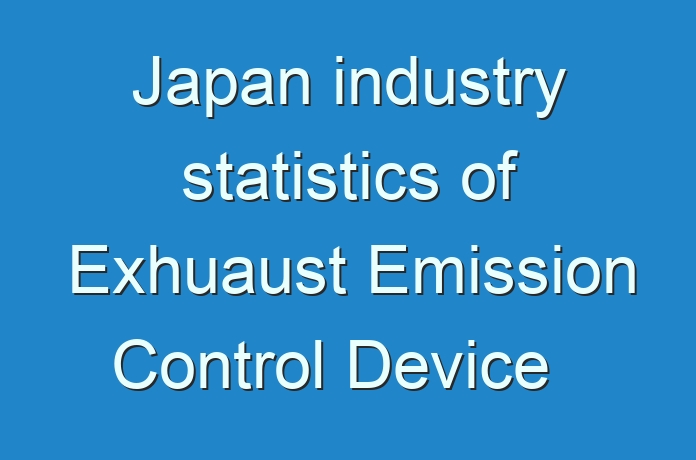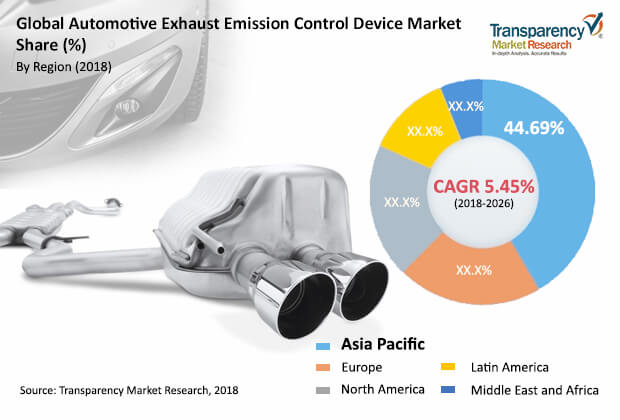
Automotive Exhaust Emission Control Device Market – Snapshot
Exhaust emission control devices are installed in the exhaust pipes of vehicles in order to reduce the emission of hazardous pollutants such as carbon monoxide, hydrocarbons, and nitrogen oxides. Catalytic converters and particulate filters convert and trap the pollutants and reduce their effect on the environment.
As vehicular emissions continue to rise, globally, demand for emission control devices to mitigate the impact of vehicular emissions has increased considerably. Increasingly stringent emission standards, as proposed by government in different countries across the globe, are proliferating the growth of exhaust emission control device market. Augmented demand of vehicles in developing countries is anticipated to pave way for the market growth. Adoption of Euro 6 and U.S 2010 emission norms in Europe and North America respectively have been posing a trigger factor amidst the automotive players compelling them to adhere to comply with the norms. Europe has set a CO2 emission target of 95 gm/km for passenger vehicles, down from the current 130 gm/km. The U.S and Japan have similar targets to achieve the 121 gm/km and 105 gm/km of CO2 emission, respectively, for passenger vehicles. Vehicles need to be incorporated with a series of emission control devices in order to comply with these regulations. This, in turn, is heightening the demand for emission control devices.
Purchase our Premium Research Report At:https://www.transparencymarketresearch.com/checkout.php?rep_id=46041<ype=S

Mexico is expected to adopt Euro 6 in 2024. The transition of Mexico standards from Euro IV to Euro V are likely to necessitate the usage of selective catalytic reduction (SCR) and lean NOx trap (LNT) in diesel vehicles. SCR & LNT are widely utilized in light duty and heavy duty vehicles in North America and Europe. SCR and LNT’s have also gained a significant market share in passenger vehicles. The transition of developing countries such as China, India, Mexico, and Brazil to Euro 6 equivalent standards is anticipated to fuel the emission control device market.
Increasing demand for fuel efficiency has led automakers to offer gasoline direct injection (GDI). GDI engines emit higher particulate matter, the gasoline particulate filter (GPF) used on these vehicles help reduce emission and meet Euro 6 emission standards. Demand for GPFs is anticipated to increase due to the high sales of gasoline passenger vehicles. Gasoline vehicles are estimated to employ a combination of three-way catalytic converter (TWC) and GPF in the near future in order to meet emission standards.
Get More Press Releases by TMR: https://www.prnewswire.com/news-releases/companies-in-food-contact-paper-market-to-gain-competitive-edge-by-unlocking-sustainability-quotient-valuation-to-rise-at-cagr-of-4-5-during-2020–2028-tmr-301287491.html
The diesel particulate filter (DPF) utilized in diesel powered vehicles reduces particulate matters by up to 85%. DPFs are mandatory in North America and Europe and are employed in combination with diesel oxidation catalyst (DOC). North America and Europe also witness a significant number of LNTs being used along with DOCs and DPFs in order to curb nitrogen oxides.
Usage of high capacity engines and diesel fuel in commercial vehicles have led to the utilization of a combination of exhaust emission control devices. Increasing demand for commercial vehicles due to industrialization and improved trucking activity is estimated to fuel the demand for exhaust emission control devices. Increased demand of passenger vehicles owing to rise in disposable income is anticipated to boost the exhaust emission control device market.
Asia Pacific is forecasted to lead the exhaust emission control device market during the forecast period followed by Europe. Latin America is also anticipated to witness a high growth due to transition into Euro 6 norms.
Are you a start-up willing to make it big in the business? Grab an exclusive, PDF Brochure of this report
Key players operating in the global automotive emission control market include Johnson Matthey, Faurecia, Eberspacher Climate Control Systems GmbH & Co., KG, DENSO Corporation, Friedrich Boysen GmbH & Co. KG, Calsonic Kansei Corporation, Yutaka Giken Company Limited, Bosal, Katcon, CDTi Advanced Materials, Inc., Jetex Exhaust Ltd., SANGO Co., Ltd., Continental Emitech GmbH, Tenneco Inc., Albonair GmbH, IBIDEN Co., Ltd, and Corning Incorporated.
Contact us:
Transparency Market Research
State Tower,
90 State Street, Suite 700,
Albany NY – 12207,
United States
Tel: +1-518-618-1030 Email: sales@transparencymarketresearch.com
Website: https://www.transparencymarketresearch.com
https://todaysmarkettrends.wordpress.com





